The definition of a tabular curriculum vitae – what is it? A tabular curriculum vitae is a structured form of a resume that presents the most important information about a person in a tabular format. It includes personal data, education, work experience, skills, and knowledge, sorted in chronological order. This type of CV is widely used in Germany and is often expected in job applications.
In a tabular curriculum vitae, relevant information is divided into clearly defined categories and arranged in a logical sequence. This usually includes personal data, education, work experience, skills, and knowledge. This structured presentation allows potential employers to quickly and efficiently grasp the key information, significantly facilitating the application process. This provides the reader with a clear and comprehensive impression of the applicant's qualifications and experiences.
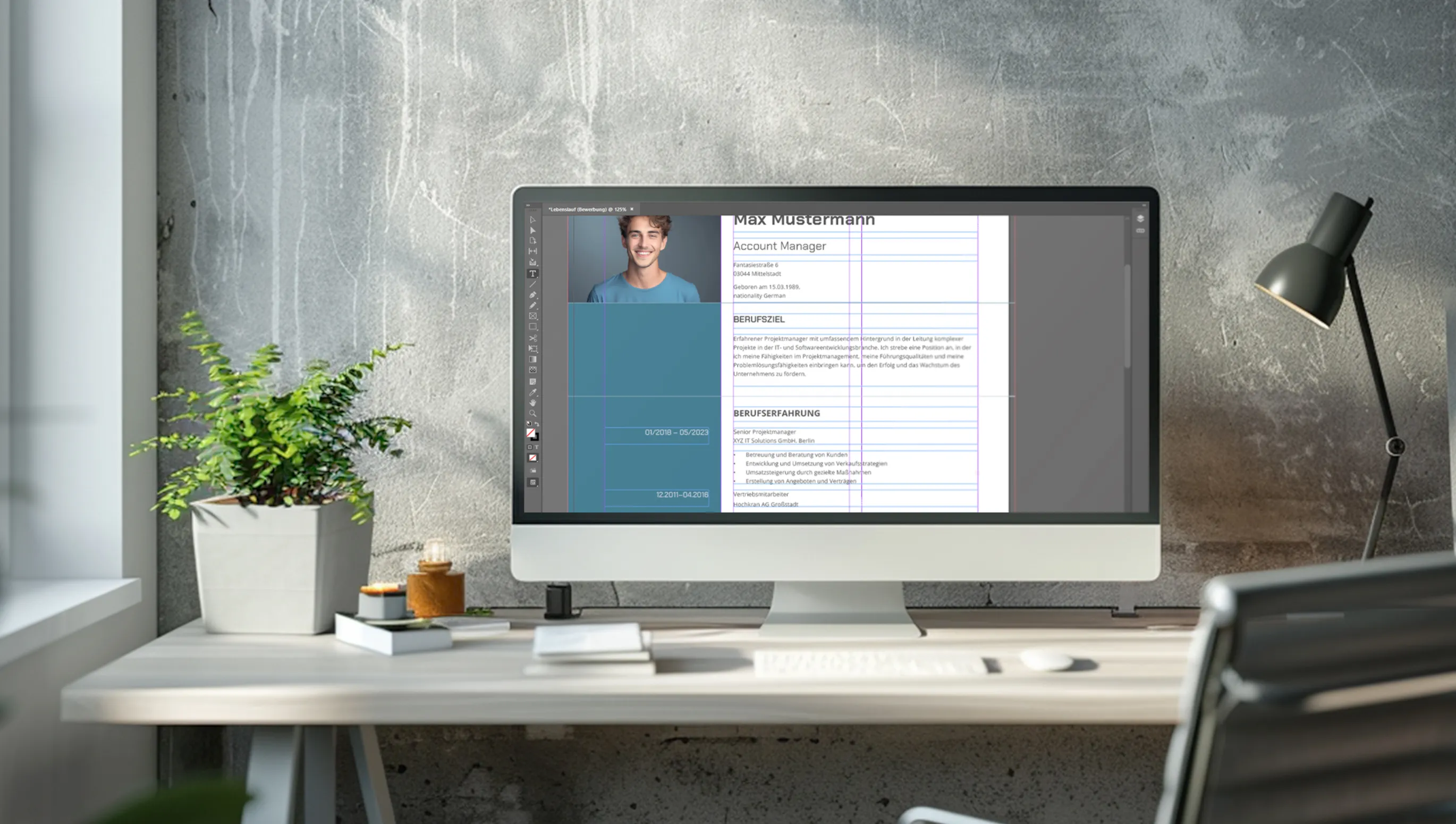
In this article, you will find examples, templates, and helpful tips for creating and writing a tabular curriculum vitae.
Table of Contents
Tabular Curriculum Vitae: Structure
When creating a tabular curriculum vitae, the DIN 5008 is often used, which is the standard for writing and layout rules in Germany. This standard helps ensure a consistent and professional layout and defines the structure and content of the tabular curriculum vitae. While it is not mandatory to strictly adhere to the DIN 5008, it is particularly recommended in formal and conservative industries. In creative or less formal industries, you can deviate from these rules and customize the CV more individually.
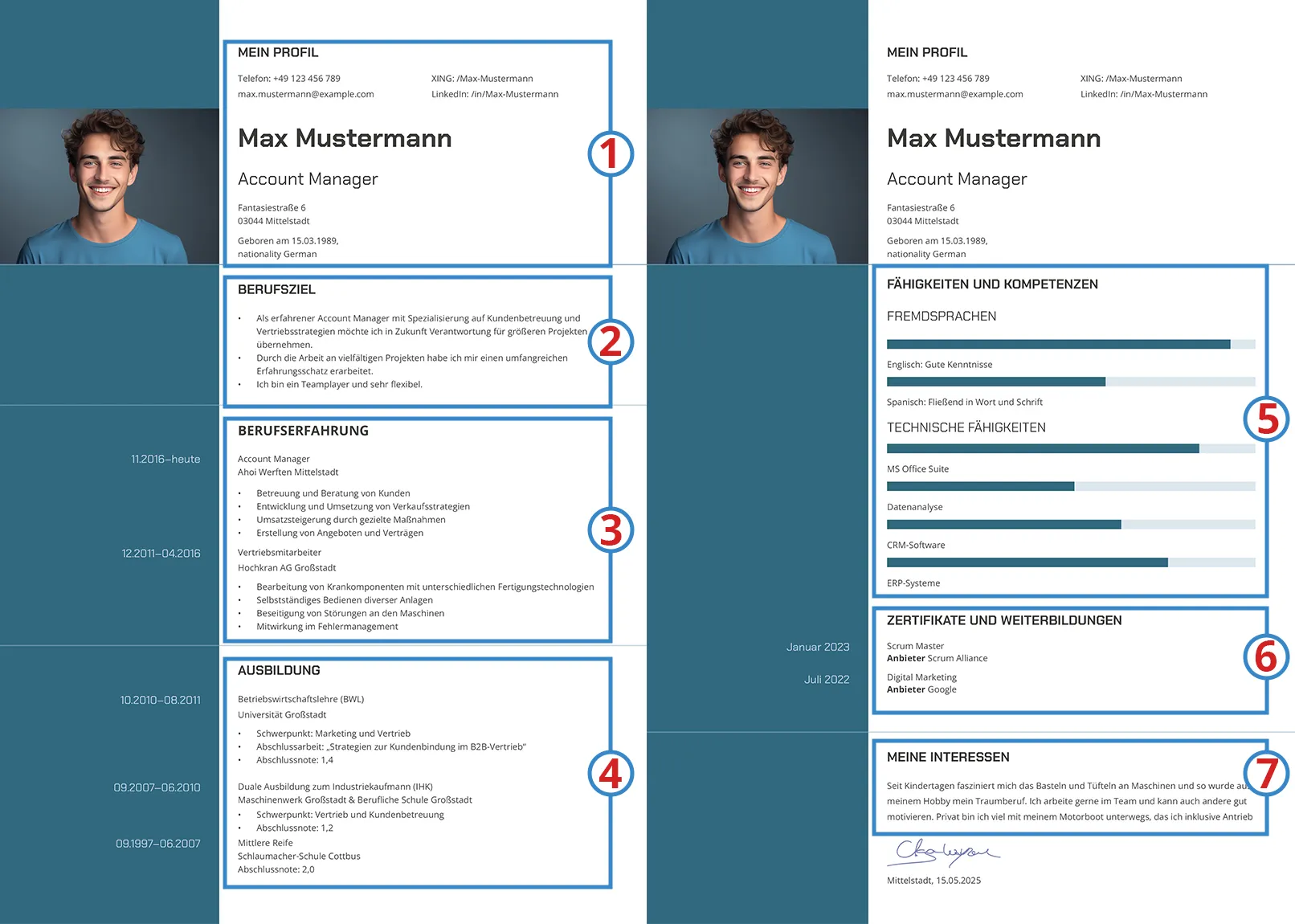
Here is the structure and content of this curriculum vitae:
- My Profile: This section includes personal data such as name, contact information (phone, email), links to profiles on social networks (e.g., XING, LinkedIn), address, and date of birth.
- Career Objective: Description of the candidate's career goals. It lists career ambitions and desired professional areas.
- Work Experience: Listing of previous positions held with information on roles and employment periods. It describes the main tasks and achievements in each position.
- Education: Section on education, detailing educational institutions, study periods, acquired degrees, and specializations.
- Skills and Competencies: Description of professional skills and competencies. This may include language skills, technical skills, and other key competencies relevant to the desired position.
- Certificates and Further Education: List of acquired certificates and completed further training courses, with details of the issuing organizations and dates.
- My Interests: Personal interests and hobbies of the candidate that can demonstrate versatility and personal qualities.
The section titles in this tabular curriculum vitae are clickable links. By clicking on these links, you can get detailed information on how to fill out the respective sections. There are examples for different professions and also tips on how not to fill out these sections. This ensures that your CV is professionally and attractively designed.
These sections constitute a standard tabular curriculum vitae that helps structure the information about the candidate in a way that allows the employer to quickly grasp the candidate's qualifications and experiences.
I will leave a link to the page here where you can download this template directly – no registration needed, direct download. On this page, you will also find information on how to save the CV as a PDF.
Tabular Curriculum Vitae: Essential Information to Include
My Profile (Personal Data) in the Tabular Curriculum Vitae
The section "My Profile" or "Personal Data" in the curriculum vitae is one of the most important parts as it contains basic information about the applicant. Here are the details that should be included in this section:
- Name: Your full name as it appears in official documents.
- Contact Information: This includes phone number and email address. Make sure your email address sounds professional. An address like "firstname.lastname@examplemail.com" is ideal.
- Address: Your current residential address. This information shows where you currently reside and is important for potential employers to know your location.
- Date and place of birth: This information is common in Germany and helps employers get an overview of your age and origin.
- Nationality: This information is particularly relevant when applying abroad or when certain legal requirements regarding citizenship apply to the position.
- Social Networks: Links to your profiles on professional networks like LinkedIn can be added. These profiles should be current and professionally designed, as employers often use them for further research.
- Photo: In Germany, it is common to include a professional application photo in the CV. It should be a recent image where you appear friendly and competent.
Although a photo is not legally required, the likelihood of getting a position without a photo is significantly lower in many companies. With a professional application photo, you have control over the first visual impression you make on your desired company. In case of doubt, the recruiter searches for you on Google. Will he like everything he finds about you on social media? You don't necessarily have to go to a studio to take a professional photo. We offer a step-by-step guide on how you can create a first-class application photo at home.
Here is an example of completed contact information:
Max Mustermann
Phone: +49 123 456 789
Email: max.mustermann@example.com
XING: /Max-Mustermann
LinkedIn: /in/Max-Mustermann
Address: Fantasiestraße 6, 03044 Mittelstadt
Date of Birth: 15.03.1989
Nationality: German
Career objective in tabular resume
The section “Career objective” in the resume offers you the opportunity to clearly communicate your professional ambitions and goals. Here you can present where you want to develop professionally and which positions or tasks particularly interest you.
Tips for filling out the section “Career objective”
- Be specific and clear: Avoid vague statements. Instead of "I want to work in a management position," write "I aim to be a team leader in the marketing department."
- Emphasize your strengths: Connect your career objective with your strengths and previous experiences. Show how your skills help you achieve your goals.
- Avoid clichés: Avoid general statements that could apply to anyone. Instead of "I want to work in a dynamic environment," write "I am looking for a challenge in a rapidly growing technology company."
- Tailor the career objective to the position: Your career objective should be tailored to the specific position or company you are applying to. Show that you know exactly what you want and why this position or company suits you.
Examples for the “Career objective” section
Example 1: Marketing Specialist
As an experienced marketing specialist with five years of experience in digital marketing, I aim to be a team leader in the online marketing department. My goal is to develop and implement innovative marketing strategies that promote company growth. My strengths lie in market trend analysis and creative use of social media. I am seeking a challenge in a dynamic and innovative company that values creative thinking and continuous development.
Example 2: Software Developer
I am a passionate software developer with extensive experience in web application development. My goal is to achieve a leadership position in software development in the coming years. I am particularly interested in projects in the field of Artificial Intelligence and Machine Learning. My programming skills and analytical mindset allow me to solve complex problems and develop innovative solutions. I am looking for a position in a company that drives technological innovations and offers the opportunity to work on groundbreaking projects.
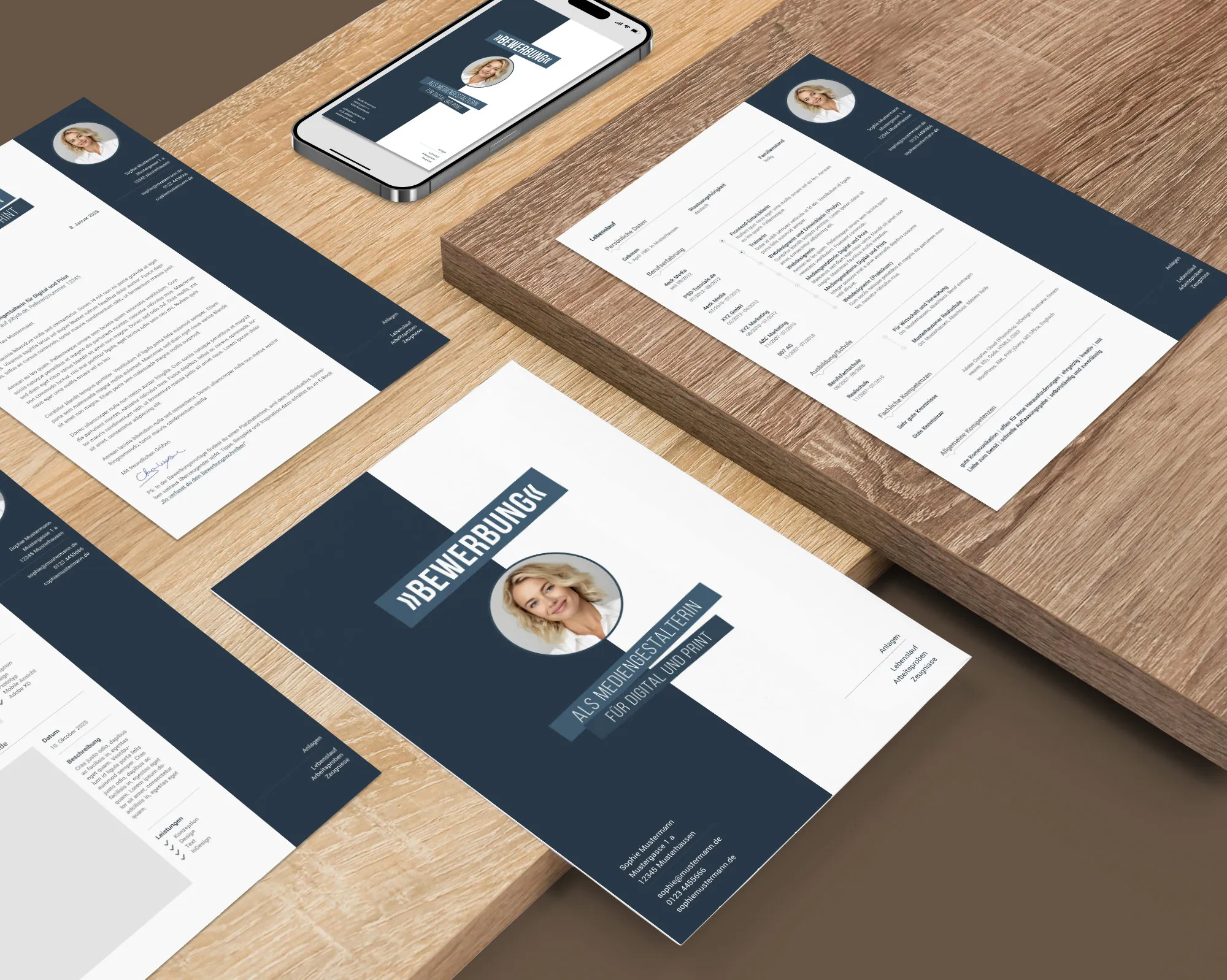
Professional experience in tabular resume
The section “Professional experience” in the tabular resume is crucial to give potential employers an overview of your previous professional stages. This section should clearly and structuredly present the positions you have held, the tasks and responsibilities you have taken on, and the achievements you have accomplished.
Contents of the section “Professional experience”
- Company name and location: State the full name of the company along with the location.
- Position/Title: Specify the exact designation of your position in the company.
- Period: Mention the period of your employment, ideally in the format Month/Year - Month/Year.
- Main tasks and responsibilities: Describe in bullet points or short sentences your main tasks and areas of responsibility.
- Achievements and accomplishments: Highlight special achievements, projects, or improvements you have made during your tenure.
Tips for filling out the section “Professional experience”
- Relevance: Focus on positions and tasks relevant to the desired position.
- Clarity and precision: Use clear and concise formulations to describe your activities and achievements.
- Quantify: Where possible, quantify your achievements (e.g., "Increased revenue by 20%", "Reduced costs by 15%").
- Chronological order: List your professional experience in reverse chronological order, starting with your most recent position.
Examples for the section "Work Experience"
Example 1: Marketing Manager
Marketing Manager
XYZ GmbH, Berlin
01/2018 – 05/2023
- Development and implementation of marketing strategies to increase brand awareness
- Management of a team of 5 employees
- Planning and execution of advertising campaigns (online and offline)
- Analysis of market data and adjustment of strategies accordingly
- Successes: Increase in social media followers by 30%, revenue increase by 20% through targeted campaigns
Example 2: Software Developer
Software Developer
ABC Tech Solutions, Munich
06/2015 – 12/2017
- Development and maintenance of web applications in Java and JavaScript
- Collaboration with the design team to improve the user interface
- Conducting code reviews and quality assurance
- Implementation of API interfaces
- Success: 40% reduction in loading times of the main application
Education in the tabular curriculum vitae
The section "Education" in the tabular curriculum vitae provides an overview of your academic and school career as well as relevant further education. Here you show what educational qualifications you have obtained and what skills you bring.
Contents of the "Education" section
- Name of educational institution: Provide the full name of the school, university, or further education institution.
- Location of educational institution: Specify the location of the institution.
- Period: Indicate the duration of your education or studies, ideally in the format month/year - month/year.
- Degree and field of study: Specify the degree obtained as well as the course of study or specialization.
- Relevant achievements and emphases: Mention special achievements, emphases, or projects that were significant during your education.
Examples for the "Education" section
Example 1: Bachelor's Degree
Bachelor of Science in Business Administration
University Sample City, Sample City
10/2015 – 09/2019
- Emphasis: Marketing and Sales
- Grade: 1.7
- Relevant projects: Development of a marketing strategy for a local start-up
Example 2: Vocational Training
Office Management Clerk
Vocational School Sample City, Sample City
09/2012 – 06/2015
- Emphasis: Administration and Organization
- Grade: 2.0
- Practical experience: 3-month internship in the HR department of a medium-sized company
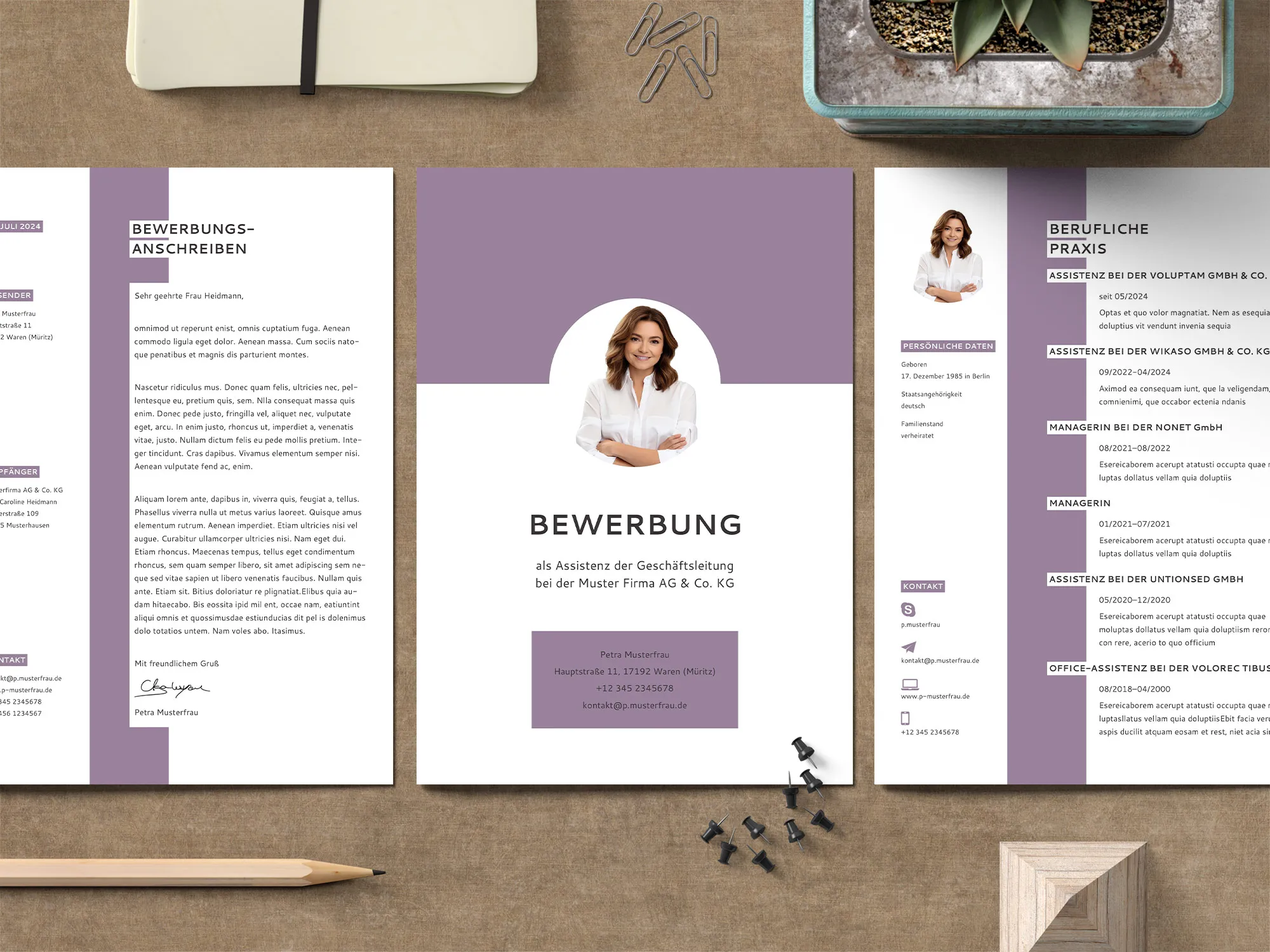
Skills and Competences in the tabular curriculum vitae
The section "Skills and Competences" in the tabular curriculum vitae is crucial to give potential employers an overview of your relevant knowledge and skills. Here you can highlight the special competencies that qualify you for the desired position.
Contents of the "Skills and Competences" section
- Professional skills: These include specific technical knowledge, software skills, and job-specific skills.
- Language skills: List the languages you master and indicate your level (e.g., native language, fluent, basic knowledge).
- Soft skills: These include personal and interpersonal skills such as teamwork, communication skills, and problem-solving skills.
- Certificates and further education: Mention relevant certificates and completed courses that support your skills.
Examples for the "Skills and Competences" section
Professional skills
- Microsoft Office (Word, Excel, PowerPoint) – Very good knowledge
- Project management software (e.g., Trello, Asana) – Good knowledge
- Programming (Java, Python) – Advanced knowledge
- Graphic design (Adobe Photoshop, Illustrator) – Basic knowledge
Language skills
- German – Native language
- English – Fluent in spoken and written
- Spanish – Basic knowledge
Soft skills
- Teamwork: Experience in working in interdisciplinary teams
- Communication skills: Ability to convey complex information clearly and understandably
- Problem-solving skills: Creative and analytical approach to challenges
- Time management: Efficient planning and prioritization of tasks
Certificates and Further Education
- Project Management Certificate (Chamber of Industry and Commerce)
- Controlling with Excel Certificate (TutKit)
- English Language Certificate (TOEFL: 100 points)
Certificates and Further Education
The section “Certificates and Further Education” in the tabular CV is important to highlight additional qualifications and further education beyond your formal training. These can give you a competitive advantage by demonstrating your continuous learning readiness and commitment to professional development.
Content of the section "Certificates and Further Education"
- Certificate or Course Name: Provide the exact title of the certificate or course.
- Institution: Mention the organization or institution that issued the certificate or offered the course.
- Period: Specify the period in which you completed the course, ideally in the format Month/Year - Month/Year.
- Contents and Emphases: Briefly describe the contents or emphases of the course to clarify its relevance.
Examples for the section "Certificates and Further Education"
Example 1: Project Management
Project Management Certificate (Chamber of Industry and Commerce)
Chamber of Industry and Commerce Sample City
01/2020 – 04/2020
- Contents: Project planning, risk management, team leadership
- Final Grade: Very good
Example 2: Controlling
Controlling with Excel through Self-Study
TutKit (Online self-study with certificate)
05/2019 – 12/2019
- Contents: Data analysis, machine learning, Python programming
- Graduated with distinction
My Interests
The section “My Interests” in the tabular CV offers you the opportunity to highlight your personality and extracurricular activities. Although this section is less formal, it can give potential employers insight into your personal interests and demonstrate how you engage outside of work.
Content of the section "My Interests"
- Hobbies: List hobbies and leisure activities that you regularly pursue.
- Clubs and Memberships: Mention memberships in clubs, associations, or nonprofit organizations.
- Sporting Activities: Specify sports interests that emphasize teamwork, discipline, or endurance.
- Creative Activities: Describe creative hobbies that showcase your innovation and creativity.
- Volunteer Work: Mention volunteer activities or engagement to emphasize social responsibility and commitment.
Tips for Completing the Section "My Interests"
- Relevance: Focus on interests that positively reflect your personality and may be relevant to the desired position.
- Diversity: Show a variety of interests to emphasize your versatility.
- Authenticity: Be honest in describing your interests to appear authentic.
- Detail: Keep the descriptions concise to maintain readability.
Examples for the section "My Interests"
- Reading and Writing: Writing short stories and articles for a personal blog.
- Sports: Active member of a local football club, participation in regional competitions.
- Music: Playing guitar in an amateur band, regular performances at local events.
- Traveling: Exploring different cultures and languages, particularly interested in Asia.
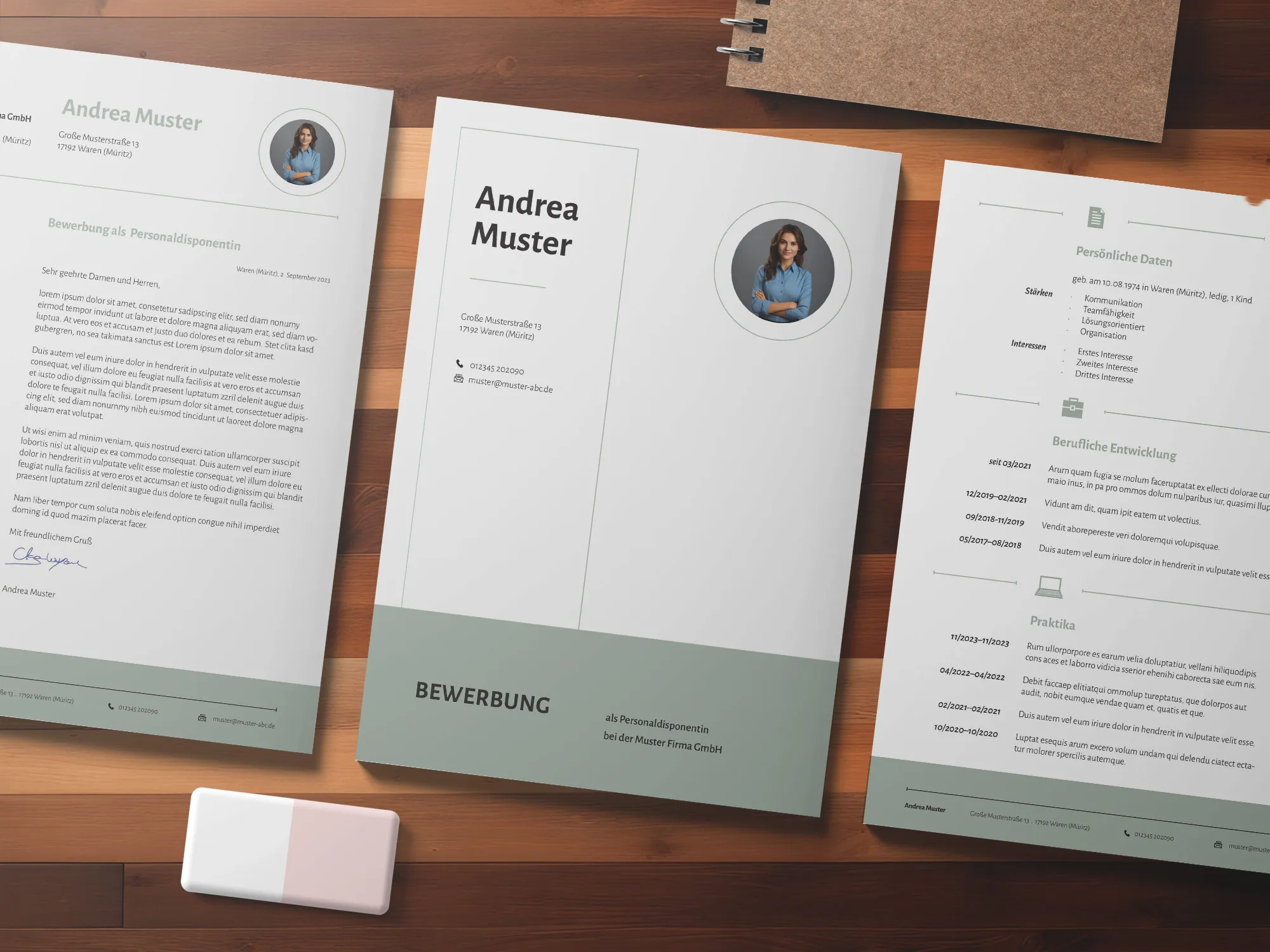
The designs of CVs can vary widely and should be selected based on the position and other circumstances. However, one thing is certain: All CV templates on the TutKit.com portal are high-quality, stylish, and modern.
Tabular CV: Formatting
A neat layout is crucial for the structure of a tabular CV. Unlike the cover letter, which can be structured according to DIN 5008 for business letters, there is no set standard for the tabular CV.
Nevertheless, the layout of your application documents should always appear consistent and professional. You can orient yourself on the guidelines of DIN 5008 for formatting:
- Top margin: 2.5 cm (maximum 4.5 cm with header)
- Bottom margin: 2.4 cm
- Left margin: 2.5 cm
- Right margin: 1.5 to 2 cm
- Line spacing: 1 to 1.5
- Font size: 11 to 12 points
DIN 5008 does not specify a particular font, but readability is the top priority. Therefore, you should avoid fancy fonts. With modern and clear fonts like Roboto, Noto, Open Sans, Sourca Sans, or Montserrat, you can never go wrong. Avoid Arial, Times New Roman, or Calibri as they are used by almost everyone and appear generic. But you are not like everyone, you are better!
A consistent and well-structured layout contributes to making your application documents look professional and appealing.
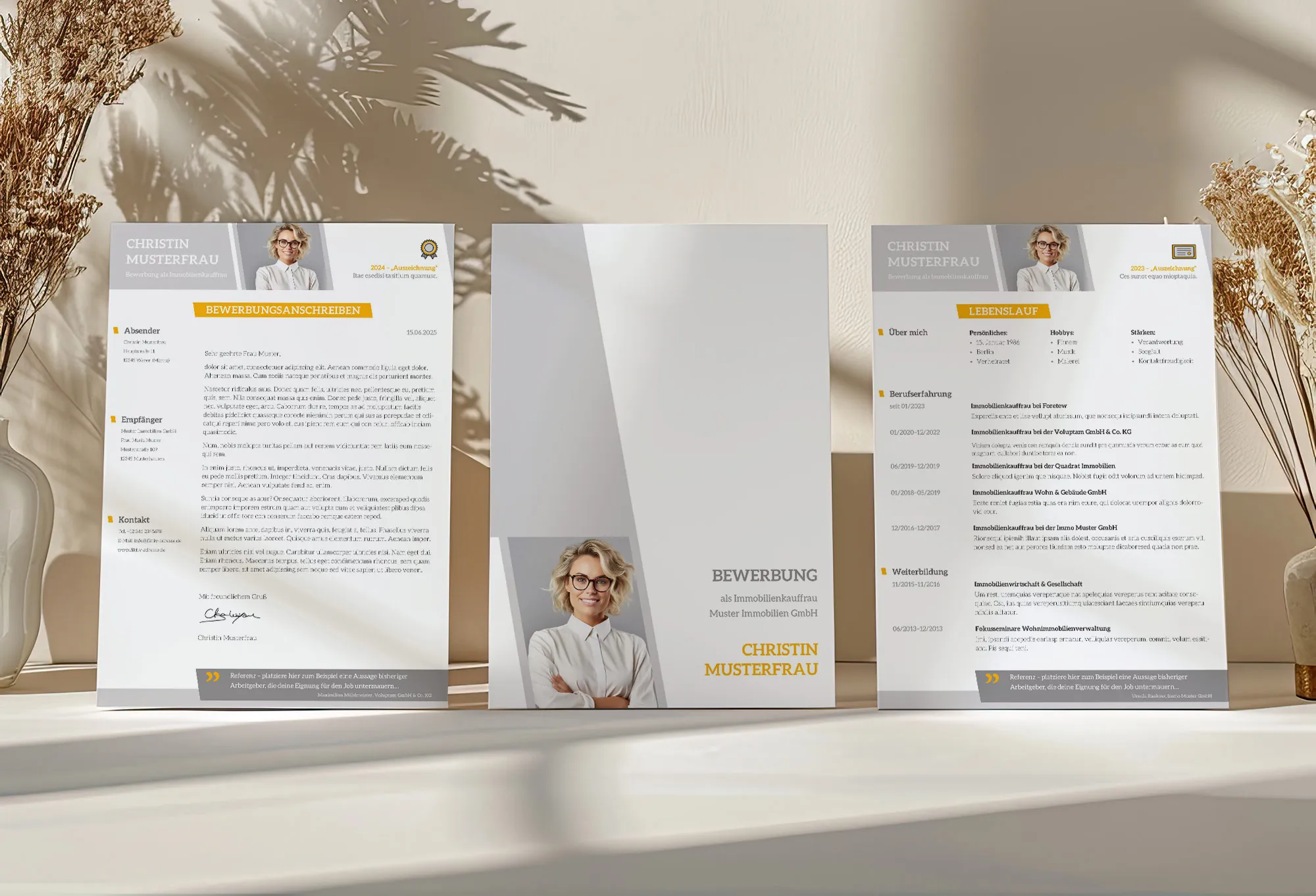
To prepare well for the interview, we have a helpful article: “Questions in the Interview: Best Preparation for a Job Interview”.
Tabular Curriculum Vitae: Sample
Do you want to create a professional tabular resume but don't know where to start? No problem! Let's fill out your CV in Word together. With our step-by-step guide and practical tips, creating your resume will be easy.
You have the option to edit the templates in Word, InDesign, and Affinity Publisher. Below, I show you what editing in InDesign looks like. Editing in Word is the easiest. Even your grandmother can handle it. 😊
I have already left you a link to a free resume example, but in case you forgot, I will do it again.
Max Mustermann
Phone: +49 123 456 789
Email: max.mustermann@examplemail.com
XING: /Max-Mustermann
LinkedIn: /in/Max-Mustermann
Address: Fantasy Street 6, 03044 Middletown
Born on: 15.03.1989
Nationality: German
Career Objective
Experienced project manager with a comprehensive background in leading complex projects in the IT and software development industry. I am seeking a position where I can apply my skills in project management, leadership qualities, and problem-solving abilities to promote the success and growth of the company.
Professional Experience
Senior Project Manager
XYZ IT Solutions GmbH, Berlin
01/2018 – 05/2023
- Leading an interdisciplinary team of 10 people in implementing IT projects
- Planning and managing project budgets up to 1 million euros
- Ensuring compliance with schedules and quality standards
- Conducting risk analyses and developing risk management strategies
- Communication with stakeholders and presenting project results
- Successes: Reducing project durations by an average of 20%, improving customer satisfaction by 15%
Project Manager
ABC Software AG, Munich
06/2015 – 12/2017
- Responsible for planning and implementing software development projects
- Coordinating collaboration between development teams and clients
- Conducting requirement analyses and creating project plans
- Monitoring project progress and reporting to management
- Successes: Implementing agile methods resulting in a 25% productivity increase, successful implementation of 15 software solutions
Education
Master of Science in Business Informatics
Technical University of Munich, Munich
10/2012 – 09/2014
- Focus: Project Management and IT Strategy
- Grade: 1.5
- Master's Thesis: "Optimization of IT Project Management Processes through Agile Methods"
Bachelor of Science in Business Administration
University of Sample City, Sample City
10/2008 – 09/2012
- Focus: Business Management and Controlling
- Grade: 1.7
- Relevant Projects: Development of a business plan for a start-up in the software development sector
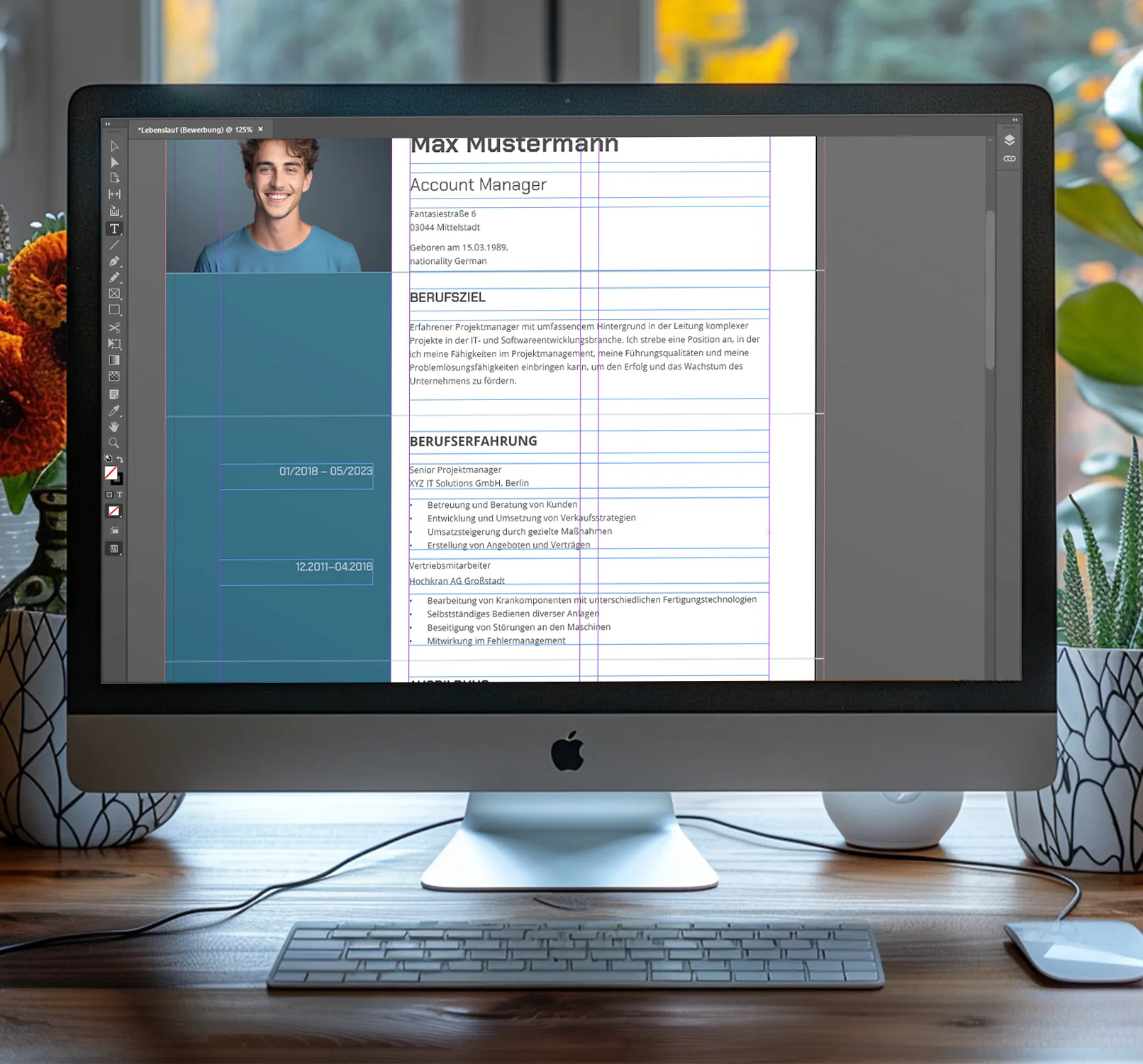
Skills and Competencies
Technical Skills
- Project Management Software (MS Project, Jira, Trello) – Very good knowledge
- IT and software development processes – Solid knowledge
- Agile methods (Scrum, Kanban) – Advanced knowledge
- Budget planning and cost control – Good knowledge
Language Skills
- English – Fluent in writing and speaking
- Spanish – Basic knowledge
Soft Skills
- Team leadership: Experience in leading and motivating interdisciplinary teams
- Communication skills: Ability to clearly convey complex issues
- Problem-solving skills: Analytical and creative approach to challenges
- Time management: Efficient planning and prioritization of tasks
Certificates and Further Education
Project Management Certificate (IHK)
Chamber of Commerce and Industry Sample City
01/2020 – 04/2020
- Contents: Project planning, risk management, team leadership
- Final grade: Very good
Certificate in Agile Project Management
Coursera (University of Sample City)
05/2019 – 12/2019
- Contents: Agile methods, Scrum, Kanban
- Graduated with distinction
English Language Certificate (TOEFL)
Educational Testing Service (ETS)
Acquired in 03/2018
- Score: 100
My Interests
- Reading and Writing: Writing specialized articles on project management topics for a personal blog
- Sports: Active member of a local football club, participation in regional competitions
- Music: Play guitar in an amateur band, regular performances at local events
- Traveling: Exploring different cultures and languages, particularly interested in Asia
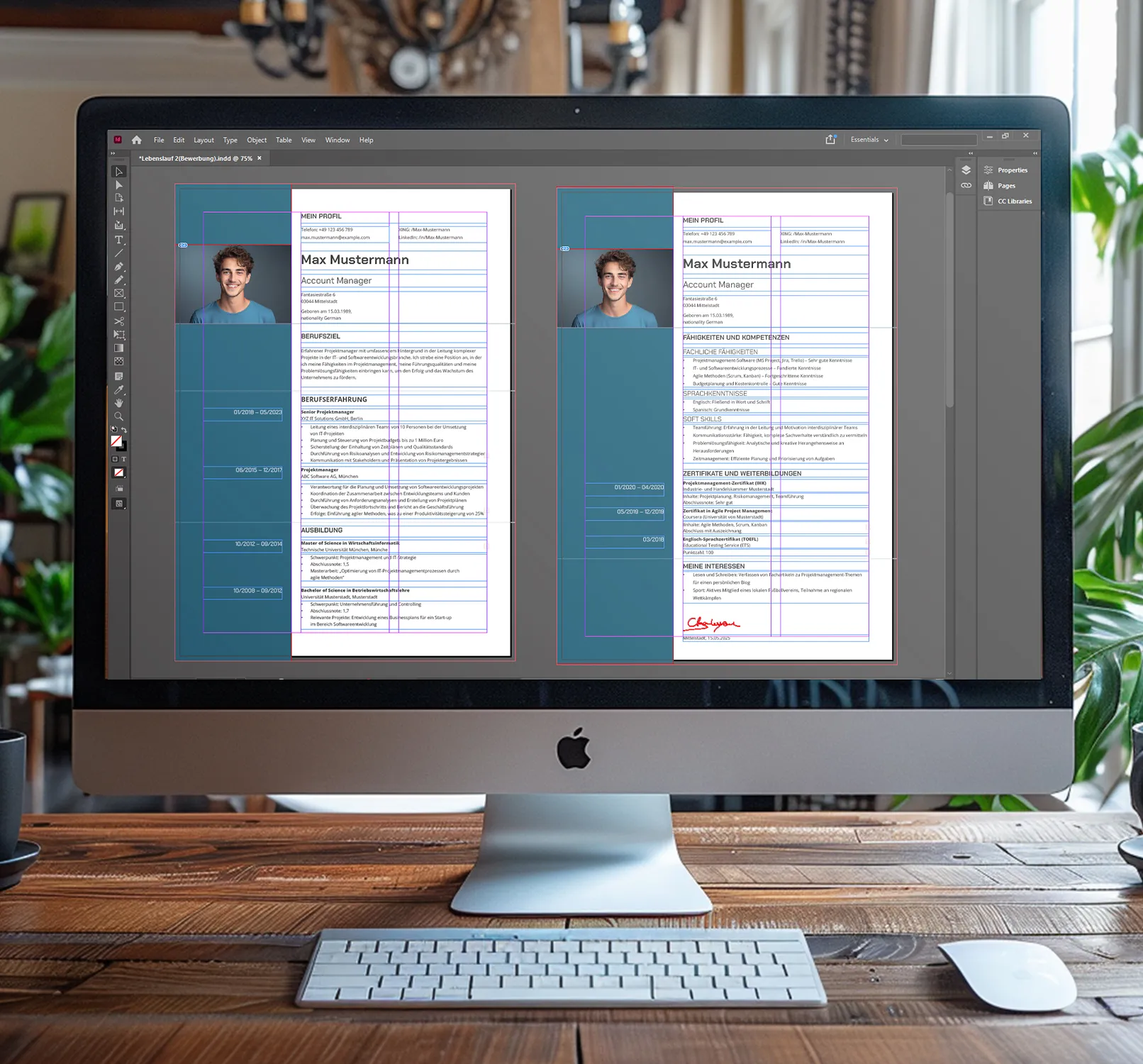
Your application must be saved in PDF format. This is for several reasons:
- Formatting: PDFs preserve the formatting of your documents, ensuring they look the same on any device and operating system. This is particularly important to ensure your CV and cover letter remain professional and legible.
- Compatibility: PDF files can be opened on almost any device, regardless of the installed software. This ensures that the employer can easily open your application.
- Immutability: PDFs are not as easily editable as Word documents, protecting the integrity and security of your data. The employer sees exactly what you sent, without the risk of unintended changes.
- Professional Impression: The PDF format is considered the standard for job application documents and leaves a professional impression. It shows that you are aware of and adhere to basic application standards.
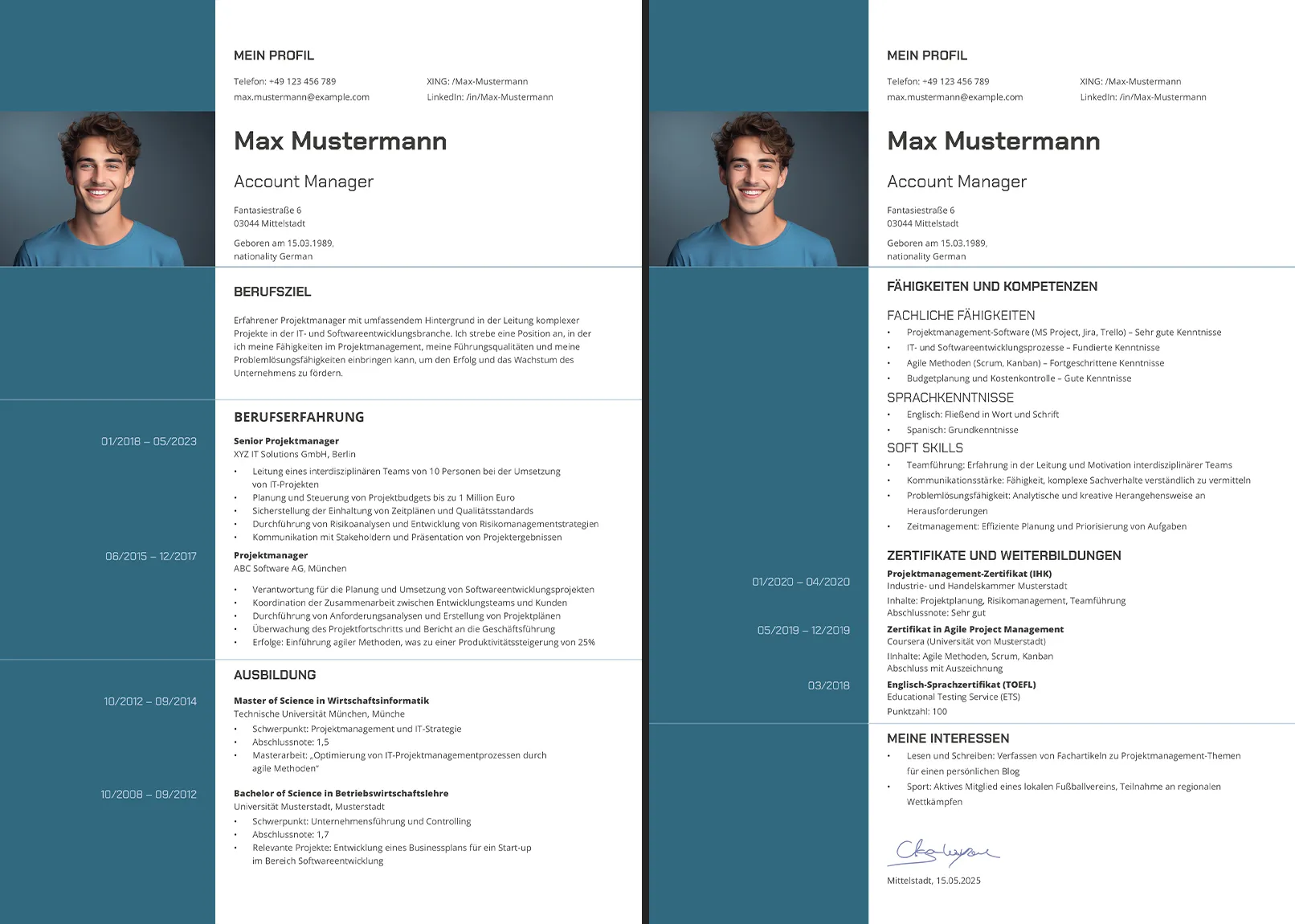
We hope you found the article What is a tabular curriculum vitae: Definition and Example helpful. We wish you success in your job search and hope you find a suitable position soon. Good luck!
What is a tabular curriculum vitae: definition and example
From Vitalii Shynakov
